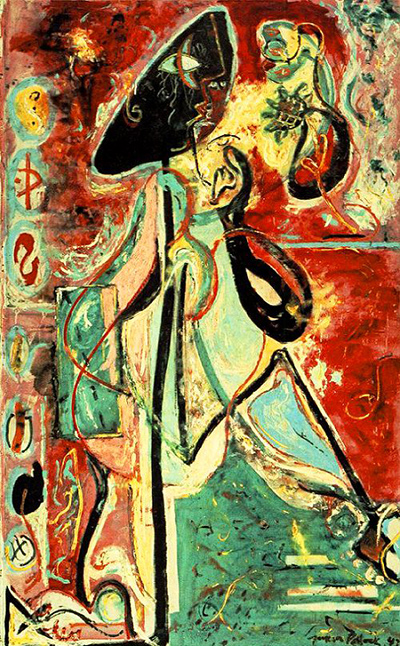An abundance of colour and abstract form leaves a treat for the eyes
The Moon Woman (1942) is a step in the movement by Jackson Pollock away from Regionalism and towards the abstract expressionism that he pioneered.
It is seen as a response to the 1939 exhibition by Pablo Picasso at MoMA in New York. Prior to visiting this Pollock had worked under the tutelage of Thomas Hart Benton and rejected the European Modern Art movement, but afterwards his art developed towards it, taking on a surrealist abstract quality.
This is clearly noticeable in The Moon Woman. A juxtaposition to the regionalist style, the image is challenging and thought provoking.
From the symbols along the side of the work to the oddly human female figure, The Moon Woman has much to take in and to explore.
In part this is the strength of the image- that it challenges the viewer to participate in understanding it- but this is not all that makes it great.
Most striking is the stark contrast between the fiery sensuality of the background and the still, cool, calm of the female figure, which reflects the fight between the public ego and the private id seen throughout the painting.
The face is depicted both in profile and in frontal view- the serene, bright face shown to the world and a darker, private face hidden behind that.
The curved lines of her body emanate from the bold black line of her backbone and give her a sense of purposefulness and power, but also isolation and other-worldliness.
Part of the Peggy Guggenheim Collection in Venice, The Moon Woman is not a typical Jackson Pollock 'Jack The Dripper' painting. As a marker of the development of Pollock's style and as an exploration of the fight between societal expectations of femininity and the individual's internal response to that it remains a fascinating piece.




